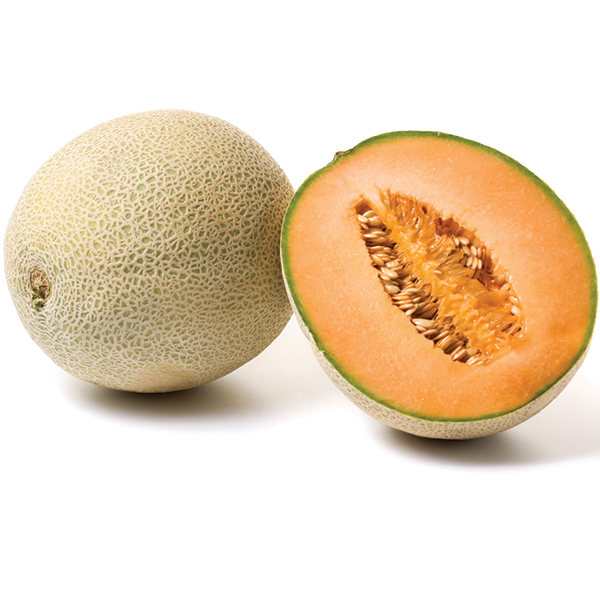
Cantaloupe is a popular breakfast food, but you can increase sales by encouraging shoppers to think of the orange melon as a healthy snack or side dish. Some consumers may not have time to cut their own melon. Offer fresh-cut options for those consumers.
Shipping
1,000-lb. bins 80-lb. jumbo crates 60-lb. 11⁄2-bushel cartons/crates 54-lb. 2⁄3 cartons/crates 45- to 50-lb. one-half wirebound crates 40-lb. one-half cartons/crates 40-lb. 11⁄9-bushel cartons/crates 40-lb. bushel baskets RPC 6416 Consumer packs 18- to 21-lb. 1-layer packs
Grades
U.S. fancy U.S. No. 1 U.S. commercial U.S. No. 2
Handling
Temperature: 36 to 41 F, 2 to 5 C Relative humidity: 90-95% Mist: no Typical shelf life: 10 to 14 days Ethylene producer. Do not store or transport with ethylene-sensitive produce. Susceptible to chilling injury. Damage sometimes is not apparent until the produce is returned to a higher temperature. If stem end is rough with portions of the stem remaining, the melon was harvested prematurely. Because cantaloupe is shipped in a firm state to avoid damage, it usually needs a few days at room temperature to soften and become juicier. Fresh-cut To prevent bacteria on the melon netting from passing through to the flesh when cutting, follow these U.S. Food and Drug Administration rules: Wash melons with potable water. Clean and sanitize the cutting area and utensil. Hold cut product at 45 F, 7 C, or lower. If product cannot be held at that temperature, throw it away after four hours. Use a marking system so employees can follow the four-hour shelf-life system.